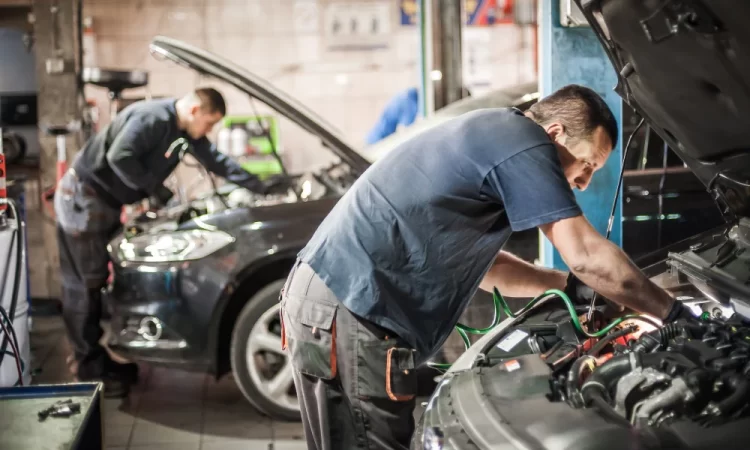
Car dent repair has evolved into a sophisticated blend of physics, metallurgy, and artistry that mirrors the intricate processes we observe in nature’s healing mechanisms. Much like a tree’s bark, which regenerates after damage, modern automotive restoration techniques have developed remarkable methods to restore vehicles to their original, pristine condition. In Singapore’s tropical climate and dense urban environment, where minor collisions and car park mishaps are as inevitable as the monsoon rains, understanding these repair methodologies becomes essential for every vehicle owner.
The Physics of Metal Memory and Restoration
The fundamental principle underlying all dent repair lies in metal’s extraordinary property of elasticity, a characteristic that allows materials to return to their original shape when external forces are removed. Steel and aluminium, the primary materials in modern vehicle construction, possess what metallurgists term “elastic memory.” This phenomenon occurs at the molecular level, where metal crystals maintain an inherent tendency to revert to their pre-stressed configuration.
Singapore’s automotive industry has witnessed remarkable advances in understanding these material properties. The city-state’s position as a global trading hub has facilitated access to cutting-edge repair technologies and training methodologies from around the world. Local workshops have adapted these techniques to address the unique challenges posed by the tropical environment, including humidity-related corrosion and the effects of intense UV radiation on paint systems.
Traditional Repair Methods: The Foundation of Restoration
Conventional dent rectification involves several time-tested approaches:
- Panel beating: The traditional hammering technique that requires exceptional skill and experience
- Body filler application: Using specialised compounds to rebuild damaged surface areas
- Sanding and refinishing: Creating smooth surfaces ready for paint application
- Multi-stage painting: Primer, base coat, and clear coat application for complete restoration
These methods, whilst effective, often require extensive dismantling of vehicle components and can take several days to complete. The process generates considerable waste materials and requires significant energy consumption for curing paints and fillers, factors that have prompted the industry to seek more sustainable alternatives.
The Revolutionary Approach of Paintless Techniques
Modern paintless restoration represents a paradigm shift in automotive repair methodology. This technique operates on the principle that if the original paint surface remains intact, the underlying metal can be carefully manipulated back to its original contour without requiring refinishing. The process requires extraordinary precision and understanding of metal behaviour under stress.
The methodology involves accessing the damaged area from behind the panel and using specialised tools to massage the metal back to its original shape gradually. This technique demands an intimate understanding of:
- Metal grain structure and directional properties
- Stress distribution patterns within damaged panels
- Tool leverage principles and force application
- Temperature effects on metal malleability
Singapore’s skilled technicians have elevated this craft to remarkable heights, developing unique approaches suited to the specific vehicle models popular in the region. The method’s appeal extends beyond mere cost considerations; it represents a more environmentally sustainable approach to vehicle maintenance.
Environmental Considerations in Tropical Climates
Singapore’s equatorial climate presents unique challenges for automotive restoration. The combination of high humidity, intense solar radiation, and frequent temperature fluctuations affects both the repair process and long-term durability of repairs. Traditional methods using solvent-based paints and fillers require careful environmental controls to achieve optimal results.
The city-state’s commitment to environmental sustainability has encouraged the adoption of eco-friendly repair techniques. Paintless methods eliminate the need for harsh chemicals, reduce volatile organic compound emissions, and minimise material waste, aligning perfectly with Singapore’s green technology initiatives.
Quality Assessment and Long-term Durability
Professional assessment of repair quality requires understanding several critical factors:
- Surface continuity: Ensuring seamless integration with surrounding areas
- Paint thickness uniformity: Maintaining a consistent protective coating
- Structural integrity: Preserving the panel’s original strength characteristics
- Corrosion resistance: Protecting against Singapore’s humid environment
Modern measuring equipment, including paint thickness gauges and surface profilometers, enables precise quality control. These instruments detect variations imperceptible to the human eye, ensuring repairs meet manufacturer specifications.
The Future of Automotive Restoration
Technological advancement continues to reshape the industry landscape. Computer-aided damage assessment, laser measurement systems, and robotic assistance are becoming increasingly prevalent. Singapore’s automotive sector, with its emphasis on technological innovation, stands at the forefront of these developments.
The integration of artificial intelligence in damage assessment and repair planning promises even greater precision and efficiency. These systems can analyse complex deformation patterns and recommend optimal repair strategies, reducing both time and material consumption.
Making Informed Decisions
Vehicle owners must consider multiple factors when selecting repair approaches. Cost considerations, whilst important, should be balanced against quality expectations, environmental impact, and long-term durability. Singapore’s competitive automotive service market offers numerous options, each with distinct advantages.
The choice between traditional and modern repair methods often depends on damage severity, vehicle age, and owner preferences. Minor impacts affecting small areas without paint damage are ideal candidates for modern techniques, whilst extensive damage may require conventional approaches.
Understanding these scientific principles and methodologies empowers vehicle owners to make informed decisions about their automotive restoration needs. Whether addressing minor car park incidents or more significant collision damage, the sophisticated techniques available today ensure that vehicles can be restored to their original condition with remarkable precision, culminating in the revolutionary advancement of paintless dent removal.




